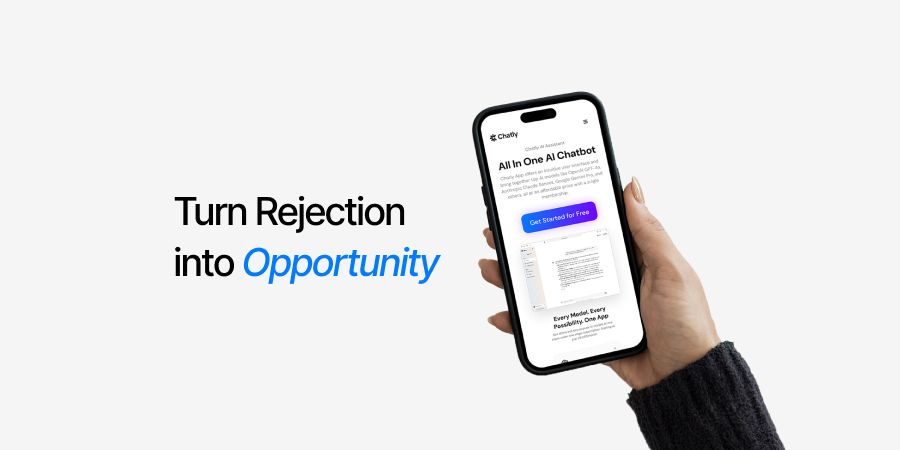
How to Write an Appeal Letter with AI
An appeal letter is not casual writing. It often carries the weight of a final decision, a grade, a job, financial aid, or even an insurance claim.
The words you choose can tilt the balance toward success or rejection. Yet most letters get skimmed, dismissed, or ignored.
Decision-makers read countless appeals. The majority sound generic, emotional, or poorly structured. An effective letter does not beg or complain; it reframes the case with clarity and evidence. That is where many applicants fail.
This guide focuses on building appeal letters that actually get read, backed by practical examples and supported by AI tools that sharpen tone and structure without stealing authenticity.
Why Appeal Letters Fail More Often Than They Succeed
A large portion of appeal letters never make it past the first few sentences. The issue is rarely intent – most people genuinely want their case reconsidered – but the way they present it.
Emotional Rants Instead of Professional Tone
Many letters are filled with frustration, blame, or overly personal detail. Decision-makers are not persuaded by anger. They want respectful, concise arguments backed by evidence. A letter written like a complaint often gets discarded.
Generic Templates with No Personalization
Pre-written samples flood the internet, but committees and HR managers recognize them instantly. A copied template with names swapped out shows little effort. Without tailoring, the letter blends into a pile of unconvincing requests.
Irrelevant or Excessive Detail
Applicants sometimes write pages of backstory, hoping volume will prove their point. Long-winded explanations dilute the argument. Decision-makers skim, lose interest, and move on. Relevance is more persuasive than length.
Ignoring Structure and Format
An appeal letter is still a formal document. Missing a subject line, failing to address the right person, or skipping a closing statement signals carelessness. Even strong arguments lose force when the format looks unprofessional.
Lack of Evidence or Documentation
A decision is unlikely to be reversed without proof. Citing policies, attaching supporting documents, or referencing records adds weight. Without evidence, the letter reads as opinion, not a case.
The Real Job of an Appeal Letter
An appeal letter is often misunderstood. Many treat it as a chance to vent emotions or to restate the same arguments already rejected. That approach almost always fails. The real purpose is more precise.
An appeal letter reframes your case. It acknowledges the decision made, then presents a structured argument for why it should be reconsidered. The focus is not on reliving frustration but on demonstrating logic, fairness, and documented facts. Decision-makers do not want pleas – they want reasons.
A persuasive letter answers three silent questions in the reader’s mind:
-
Is this request reasonable?
-
Is there evidence to support it?
-
Does the tone reflect respect and professionalism?
Letters that hit all three points stand out because they show maturity and preparation. By treating the appeal as a professional communication rather than a personal outburst, applicants increase the chance of being heard.
Breaking Down the Anatomy of Persuasion
Strong appeal letters are built on a framework. This structure makes the message clear and easy to follow. Each part plays a role in convincing the reader to reconsider.
The Hook: A Direct Opening
The introduction should immediately state the purpose. For example: I am writing to respectfully appeal the decision regarding my financial aid application dated June 3. This leaves no doubt about intent. Avoid vague or emotional openings.
The Middle: Facts and Context
This section lays out the situation clearly. Summarize the background, then provide context without unnecessary details. Support with documents, references, or policy points where possible. Facts carry weight; general claims do not.
The Turn: Why the Decision Deserves Review
Here, present justification. Highlight overlooked information, errors in evaluation, or new evidence. Keep reasoning tight and objective. This is where persuasion happens — the reader must see a valid reason to reconsider.
The Exit: Professional Closing
Conclude by expressing gratitude and outlining next steps. A simple line such as Thank you for reviewing my appeal, and I appreciate your consideration of this matter works effectively. The tone should be respectful, confident, and free of desperation.
Examples That Actually Work for Writing An Appeal Letter
Academic Appeal
I am writing to appeal the grade assigned for my final project in the course “Modern Literature.” I believe the grade does not accurately reflect the work submitted, as two key sources cited in the essay were not acknowledged during review. I have attached the full list of references and the original submission for clarity.
This works because it points to specific evidence, avoids emotional phrasing, and provides documentation. The student does not argue in generalities but instead highlights a clear oversight.
Workplace Appeal
I respectfully request reconsideration of the disciplinary action issued on September 15. The decision was based on late project delivery, but supporting documentation shows the delay was due to a client-side change. I have attached all related emails and revised project timelines to confirm.
This letter succeeds by taking ownership of the situation but redirecting responsibility with evidence. The respectful tone acknowledges the seriousness of the decision while building a factual case for review.
Financial Aid Appeal
I am writing to appeal the decision regarding my financial aid application. Since submitting the original request, my family’s circumstances have changed significantly due to unexpected medical expenses. I have attached supporting invoices and updated financial statements for review.
This works because it introduces new information not available in the first application. It presents facts and documentation without dramatization.
Writing an Appeal Letter as a Creative Process, Not Just a Format: Step by Step
Many people believe appeal letters are rigid documents with little room for creativity. The truth is different. An effective letter balances structure with personal expression. Treating it as a creative process improves authenticity and flow.
Start Messy
Begin by writing down every reason, thought, or piece of evidence. At this stage, clarity does not matter. Capturing all ideas prevents missing details later.
Shape the Story
Once the raw material is gathered, organize it into a narrative. Connect events to values, policies, or documented proof. Decision-makers respond better when they can follow a logical story instead of fragmented points.
Refine the Tone
A letter that feels too stiff loses impact. One that feels too emotional risks rejection. Striking a balance is essential. Reading the draft aloud helps reveal whether the tone sounds respectful, confident, and natural.
Keep It Concise
Decision-makers rarely have time to read long appeals. A strong letter fits on a single page, no matter the context. Aim for fewer than five minutes of reading time. Brevity signals focus and professionalism.
Next Steps After Sending an Appeal Letter
Writing and sending the appeal letter is only the first stage. What happens after submission can determine whether your case gains traction. Knowing how to follow up, when to expect a response, and what to do if nothing happens ensures your effort is not wasted.
How to Follow Up Professionally
Following up is essential because organizations handle dozens of requests daily. A short, polite email or phone call about one week after submission shows initiative without being pushy. Reference the date the letter was sent, the decision being appealed, and your contact details. Avoid repeating the arguments from the letter – the follow-up is simply a reminder that your case is pending.
How Long to Wait for a Response
Most academic institutions and workplaces specify timelines for appeals, often ranging from 10 to 30 days. Scholarship or financial aid committees may take longer, depending on review schedules. If no timeline is published, waiting two weeks before checking back is considered reasonable. This balance shows patience while still protecting your rights.
What to Do If Ignored
Silence does not always mean rejection. Administrative backlogs, holidays, or missing attachments can delay responses. If more than a month passes with no reply, escalate politely.
Contact the next level of authority listed in the policy or handbook, and include proof that the original appeal was submitted on time. Escalation should always remain respectful and factual, not emotional.
Why Next Steps Matter
An appeal letter gains strength when the process around it is managed carefully. Tracking deadlines, keeping copies of all correspondence, and maintaining professional communication signals seriousness. Decision-makers notice applicants who respect procedure as much as content.
How AI Can Help Without Taking Over
AI tools like Chatly are powerful allies in writing appeal letters, but they are not replacements for your own judgment. Decision-makers want to hear your voice. AI should act as a drafting partner, helping you polish, not impersonate.
AI Search for References and Examples
Appeal letters gain strength from referencing policies, procedures, or similar cases. AI search functions can quickly surface these resources. Instead of spending hours scanning documents, you can gather the right references in minutes.
AI Chat for Tone Adjustment
Tone is often the hardest part of an appeal letter. Too soft, and it feels weak. Too aggressive, and it feels hostile. AI chat tools generate variations of the same paragraph so you can compare styles and select the one that balances firmness with respect.
Multi-Model Support for Alternatives
Different AI models produce slightly different outputs. By running the same appeal draft through multiple models, you get varied phrasings and structures. This lets you select the option that best fits your situation without feeling repetitive or robotic.
Templates for Structure and Flow
AI-generated templates offer scaffolding for those who feel stuck. These frameworks ensure that key sections – introduction, context, evidence, and closing – are not forgotten. Templates provide order, but your details supply persuasion.
Mistakes to Avoid When Using AI for Appeal Letters
AI can strengthen your writing, but overdependence can backfire. Some errors are common among users who treat AI outputs as final drafts.
Copy-Pasting Without Editing
Decision-makers often read letters that sound generic or strangely phrased. These usually come from AI outputs used without changes. Raw AI text lacks the personal detail committees expect. Always revise and personalize before sending.
Over-Polishing Until It Feels Cold
AI sometimes creates overly formal or mechanical sentences. If you accept every suggestion, your letter may lose warmth. Decision-makers respond better to respectful human tone than machine-polished perfection.
Ignoring Formatting and Deadlines
AI can write words, but it cannot manage logistics. Submitting an appeal past the deadline or with the wrong format undermines even the strongest draft. Use AI for content but take personal responsibility for delivery.
Relying on AI Without Adding Evidence
AI can suggest structure but cannot generate your supporting documents. Appeals succeed with proof: invoices, grade reports, policy references. Letters that lack evidence sound weak, regardless of how well they are written.
Conclusion
An appeal letter is often the final chance to reverse a decision. Success does not come from emotion or lengthy backstory. It comes from structure, clarity, and evidence presented with professionalism.
A strong appeal letter introduces the request directly, explains the situation with relevant facts, supports the case with documents or references, and closes with respect. Each element builds credibility and helps the decision-maker view the case differently.
AI tools add value by helping draft, adjust tone, and organize content, but they are only aids. The substance of the letter – your experiences, your evidence, your reasoning – must remain human.
The best results come when technology supports your voice rather than replaces it.
Suggested Reads
Frequently Asked Questions
Top questions related to writing appeal letters.
More topics you may like

11 Best ChatGPT Alternatives (Free & Paid) to Try in 2025 – Compare Top AI Chat Tools

Muhammad Bin Habib

24/7 Customer Support with AI Chat: Benefits, Examples and More

Muhammad Bin Habib

28 Best AI Tools for Students in 2025 – The Complete AI-Powered Academic Success Guide

Muhammad Bin Habib

Alibaba Shares Rocket as AI and Cloud Drive Market Confidence

Muhammad Bin Habib

Anthropic Launches Claude AI Agent Inside Chrome

Muhammad Bin Habib
